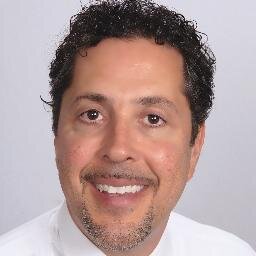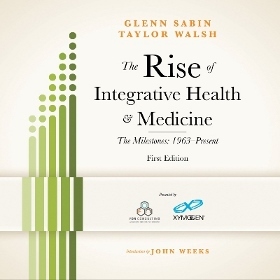Preventive Medicine as a Viable Financial Model

Prevention remains the only magic bullet ‘cure’ for most malignancies and chronic disease. It’s where we’re headed. The conundrum for providers lies in delivering the most effective services with sufficient profit margin.
I consider the new healthcare law ‘ACA 1.0’ and, thankfully, version 2.0 is just around the (cost curve) bend. Hopefully we are getting closer with current incentives in place rewarding health outcomes via patient-centered medical homes, accountable care organizations and ‘free’ preventive medical screenings and imaging provisions.
For hospital systems, the paradigm shift toward a risk-based population health model is already upon us and steadily gaining traction across the country. However, we must first address the single most challenging and fundamentally consequential health issue of our time: the economics of true disease prevention via the art and science of health creation. Until then we’ll never be able to fully leverage the incontrovertible body of knowledge supporting an array of preventative health measures proven to significantly reduce instances of disease and subsequent treatment costs.
Unfortunately, Dr. Steven Charlap learned this the hard way. I read about the closing of his Florida-based preventive medicine practice, MDPrevent, in The Atlantic earlier this year. It’s an impressive and significant story well worth reading. Charlap’s personal health narrative led him to read 50 books and over 30,000 abstracts and studies on the way to dropping 25 pounds, reducing his cholesterol under 200, eliminating his IBS and osteoarthritic pain and, ultimately, to ridding himself of all related medications.
His personal quest to deliver authentic preventive medicine tells a noble story of superb clinical care, valuable lifestyle coaching and effective communication regarding the importance of maximizing PPACA free annual wellness visits. Featuring a third-party payer model, MDPrevent offered a bevy of services bundled into its core clinical offerings including: a teaching kitchen, gym and group exercise classes, nutrition therapy, diabetes education and mindfulness-based meditation classes. Unsurprisingly, Charlap observed remarkable results; his patients greatly appreciated his quality care.
Enjoying this article? Subscribe and get our latest, delivered straight to your inbox.
Experience and MBA notwithstanding, Dr. Charlap couldn’t make a preventive care delivery model work within a conventional third-party reimbursement business framework and, alas, MDPrevent lost $2 million on the way to ultimately closing its doors.
Charlap, who had previously built and sold a successful medical services company prior to launching MDPrevent, stated that “altruism” rather than financial gain was his motivation for founding MDPrevent. In spite of best intentions, in the end he learned a hard lesson:
In our current third-party payer system, providing comprehensive prevention-focused care alone doesn’t pay providers, it penalizes them. (click to tweet)
In a recent Huffington Post article, my colleague John Weeks did a fine job capturing Dr. Donald Berwick’s call for a ‘radical shift to health creation. As former director of The Center for Medicare and Medicaid Services, Berwick’s patient advocacy work— especially his steadfast promotion of the Triple Aim, a value-based shift rewarding outcomes of care over sheer volume—squarely puts him at the forefront of our inexorable march towards a national prevention model.
Although healthcare costs appear to have flattened perhaps as an early result of Obamacare or, even more likely, in momentary reaction to an economy still clawing its way to full recovery, we still face the large and growing threat of chronic disease and the ensuing healthcare costs that as a percentage of GDP remains unsustainable.
An innovative, robust and sustainable prevention strategy is the only plausible answer to our ineffective disease care system. (click to tweet)
An Emphasis on Prevention is Inevitable
The political capital required to negotiate more meaningful prevention measures was simply nonexistent during the framing of PPACA 1.0. That said, while I believe in the inevitability of PPACA 2.0, it’s absolutely critical that it pushes way beyond PCMHs and ACOs to truly shift us from an ingrained tradition incenting disease care to one that rewards prevention and health creation instead.
It doesn’t take a genius to figure this one out. What’s the alternative, more of the same? How’s that been working?
Seizing Current Opportunity
It’s all about timing and the moment is now! As integrative practitioners, administrators and advocates of integrative health and lifestyle medicine, we must seize this rare opportunity to bring about great transformational change by effectively communicating the true tenets of health promotion: nutrition, stress reduction, exercise and restorative sleep.
Think about it. Who better than we to help hospital systems reduce readmission rates; to keep emergency rooms clear of unnecessary patrons; to assume leadership roles at PCMHs and ACOs; to become the chief wellness officers of our medical institutions? It is we who are destined to lead this charge forward to a value-based population health model.
Every medical organization and health system needs to identify their own integrative heath champions and place them in leadership roles. (click to tweet)
Charting Strategy for Success in the Here and Now
Dr. Charlap might have done several things differently. For example, he could have taken advantage of group clinical visits that, although attached to lower-level reimbursements per individual, work well economically with larger groups. Perhaps he could have benefited by using commercial payer CPT codes to offer group exercise, group nutrition and specialty services targeted to subsets of patients within specific categories of morbidity, i.e., diabetes, obesity and heart disease.
Conceivably, a hybrid membership model including nominal fees may have significantly helped assuming local demographics could support. So could have educating his patients about the proper use of flexi/medical savings accounts, especially as part of a high deductible insurance plan. Might a non-profit organization structure have possibly kept MDPrevent in business?
Certainly, there are many important variables beyond sheer patient demographics to consider when assessing the best integrative medicine clinic and business model for each practice’s unique situation and goals. It requires due diligence, solid clinic and business modeling and a smart strategic plan.
Though the development of a sustainable prevention and wellness model seems challenging today, it will get much easier over time as the destined shift towards more intelligent and equitable provider reimbursement incentives continue to take hold.
Here’s the secret: smartly create your model ‘for today’ but intelligently position it for the future.
If you plan and model using appropriate assumptions based on patient panel sizes, third-party reimbursement percentages, monthly membership fees, programs and additional cash-based services, you’ll have a strong recipe for economic success.
[Related Content]
Hospital Systems Ignore Integrative Medicine at their Peril
The Best Clinic and Business Model for Integrative Medicine
About FON
FON is a leading integrative health and medicine business development and strategy consulting firm. FON specializes in custom solutions for growing patient volume, developing programs, and increasing product sales. Our practical business models are driven by innovative marketing, clear messaging, and customer engagement via branded storytelling.
Contact us today to schedule a complimentary 30-minute consultation to discuss your business development or personal brand needs.

Read Glenn’s story.

